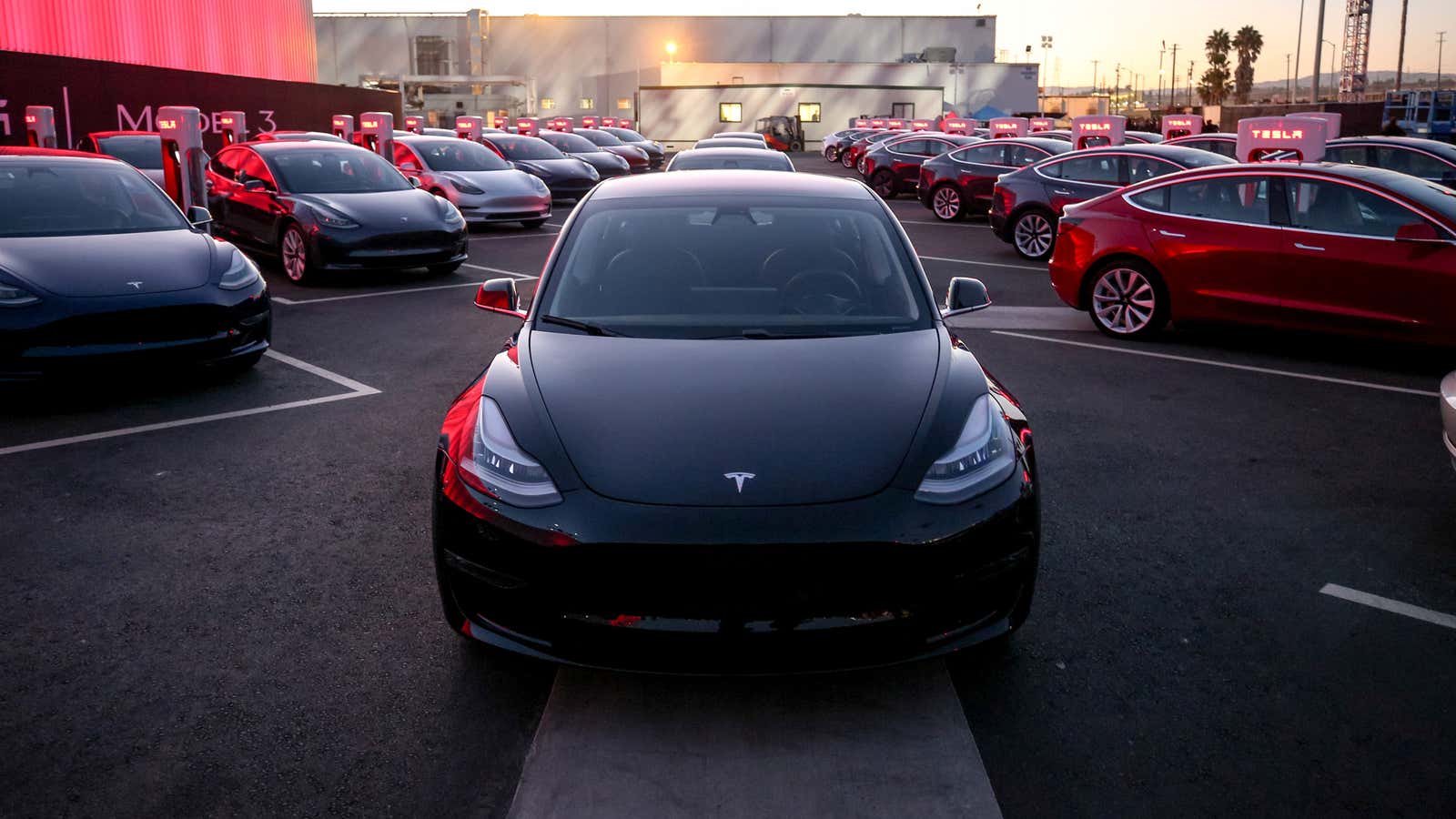Tesla CEO Elon Musk said on an investor call Aug. 2 that the company had been concerned orders would decline in a flat market for luxury cars, and the Model 3 might cannibalize orders for its premium Model S an Model X. That’s not something it’s worried about any longer.
The automaker reported that orders for the Model S and Model X are rising, even as the mass-market Model 3 now averages more than 1,800 net reservations per day (including cancelations). By comparison, the Chevy Bolt has been selling about 1,800 cars per month through April. In a letter to investors (pdf), Tesla said it expects deliveries of Model S and Model X to increase during the second half of 2017. “This is the best I’ve ever felt about Tesla to be frank,” Musk said on the call to discuss second quarter earnings.
The company delivered 22,026 cars this past quarter, and Musk predicted the company would be producing 5,000 cars per week by the end of 2017 and 10,000 vehicles per week toward the end of 2018, translating into 500,00 cars per year.
The challenge for Tesla’s Model 3 is simple: appeal to car buyers who haven’t yet bought an electric vehicle. The electric vehicle market represent just 1% of the 17.5 million cars sold last year. Sales figures of all models are still orders of magnitude smaller than the demand Tesla will need to sell the cars it plans to produce.
So far, Tesla says it has at least 455,000 customers who have put down $1,000 to be the first in line for the company’s first mass-market vehicle, which started delivery on July 28. But to find buyers for the 500,000 cars it expects to roll off its Fremont, California assembly lines by 2018, it will need crossover appeal. It’s betting that the $35,000 Model 3, with a 220- to 310-mile range and price tag close to the US median, will be the car to do it.
In its report, Tesla said it generated $2.79 billion in revenue during the quarter, doubling the $1.27 billion figure from the same period last year, most of it from Tesla’s automotive division. Costs jumped as well: Tesla posted a $401.4 million loss in the quarter ended June 30 (its largest to date), compared with $293.2 million a year earlier. Most of its money is being spent on ramping up production.
Tesla shares rose more than 5% in after-hours trading.
